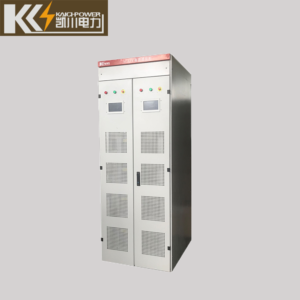
In the digital age, image and video processing have become ubiquitous, permeating various aspects of our daily lives, from entertainment and media to surveillance and healthcare. Advanced Programmable Filters (APF) have emerged as powerful tools in enhancing the quality, clarity, and fidelity of visual content. This article explores the myriad advantages of APF filters in image and video processing, shedding light on their applications, capabilities, and impact across diverse domains.
Understanding Image and Video Processing: Image and video processing encompass a broad range of techniques aimed at manipulating and enhancing visual data. These techniques include image filtering, edge detection, motion estimation, compression, and enhancement. By applying mathematical algorithms and signal processing methods, practitioners can extract meaningful information, remove noise, and improve the visual quality of images and videos.The Role of APF Filters in Image and Video Enhancement: APF filters offer several advantages over traditional image and video processing techniques. One of their key benefits is their adaptability and flexibility, allowing for real-time adjustments to filter parameters based on the characteristics of the input data. This adaptability enables APF filters to effectively suppress noise, enhance details, and improve overall image and video quality.Noise Reduction and Artifact Removal: Noise and artifacts are common sources of degradation in digital images and videos, resulting from factors such as sensor imperfections, compression algorithms, and transmission errors. APF filters employ sophisticated noise reduction techniques to selectively attenuate unwanted noise while preserving important image features. By adaptively adjusting filter coefficients, APF filters can effectively remove artifacts and enhance image clarity, leading to visually pleasing results.Edge Detection and Feature Extraction: Edge detection is a fundamental task in image processing, crucial for tasks such as object detection, segmentation, and scene analysis. APF filters excel in edge detection applications, thanks to their ability to selectively enhance high-frequency components associated with image edges. By applying edge-enhancing filters, APF filters can highlight important features, improve edge localization, and facilitate subsequent processing tasks.Motion Estimation and Video Stabilization: In video processing applications, motion estimation and compensation play a crucial role in improving video quality and reducing visual artifacts such as motion blur and jitter. APF filters offer advanced motion estimation algorithms that can accurately track object motion and compensate for camera shake or subject movement. By applying motion-compensated filtering techniques, APF filters can stabilize videos, reduce motion blur, and enhance overall visual quality.Color Correction and Enhancement: Color plays a significant role in shaping the visual perception of images and videos. APF filters provide powerful color correction and enhancement capabilities, allowing for precise adjustment of color balance, saturation, and contrast. By selectively modifying color components, APF filters can correct color casts, enhance tonal contrast, and improve overall color fidelity, resulting in vibrant and natural-looking images and videos.Practical Applications and Case Studies: Real-world examples demonstrate the practical benefits of integrating APF filters into image and video processing pipelines. Case studies include applications in surveillance systems for enhancing image clarity and object detection accuracy, as well as in medical imaging for improving diagnostic accuracy and visualization of anatomical structures. By showcasing these success stories, stakeholders gain insights into the tangible impact of APF filters on image and video processing workflows.Challenges and Future Directions: While APF filters offer significant advantages in image and video processing, they also face challenges and limitations. These include computational complexity, implementation overhead, and compatibility issues with existing software frameworks. Addressing these challenges requires ongoing research and development efforts aimed at optimizing APF filter algorithms, enhancing hardware efficiency, and streamlining integration processes.Conclusion: In conclusion, APF filters represent a powerful tool in the arsenal of image and video processing practitioners, offering unparalleled flexibility, adaptability, and performance. By leveraging advanced noise reduction, edge enhancement, motion estimation, and color correction techniques, APF filters enable the creation of visually stunning images and videos across diverse applications. As image and video processing technologies continue to evolve, APF filters are poised to remain indispensable tools for enhancing visual content and shaping the future of multimedia experiences.